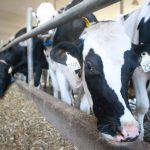
Stories by Stew Slater

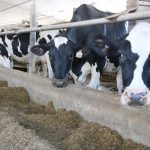
Domestic birds host for bovine influenza A virus
Epidemiologist says there is "still lots" to investigate about how virus jumped from from birds to dairy cattle
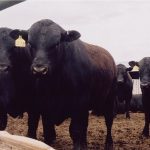
Beef-on-dairy hybrid options ranked using existing data
Lactanet partners with Angus group to help dairies that are moving towards becoming meat producers as well
Glacier FarmMedia – More dairy producers are interested in getting a slice of the beef pie these days. That’s led Lactanet to work with an U.S.-based Angus association to share genotyping of Angus bulls from Canada, the U.S. and Australia and improve breeding decisions for those hybrid farms. Brian Van Doormaal, chief services officer for […] Read more
Calmer dairy waters predicted for upcoming year
Farm Credit Canada says stress factors pressuring the industry such as borrowing and feed costs should ease in 2024
Glacier FarmMedia – A recent outlook released by Farm Credit Canada says there’s room for optimism in the dairy sector. “It has been a volatile few years for dairy producers, but 2024 is shaping up to be calmer — a return to a more normal environment, if you will,” FCC senior economist Graeme Crosbie said […] Read more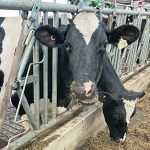
Bias could be history in dairy cow assessment
An Edmonton start-up’s experimentation with artificial intelligence-based evaluation could replace the human factor
An Edmonton-based start-up company says results from its artificial intelligence-based classification of dairy cows comes within two percent of human results. Animal science specialist Ghader Manafiazar, one of three co-founders of iClassifier, says an analysis of approximately 30,000 images collected from Canadian dairy farms shows an accuracy rate of 98 percent from the company’s machine […] Read more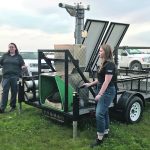
Research takes closer look at methane emissions
Study uses unique technology to measure the link between feed efficiency and enteric methane emissions in beef cattle
Feeding canola oil to beef cows could be one way to reduce their enteric methane emissions and increase feed efficiency. University of Guelph researchers adopted unique technology to investigate the link between feed efficiency and enteric methane emissions. Feed-efficient cattle reduce farmer costs, and lower enteric methane can help with greenhouse gas emission issues, creating […] Read more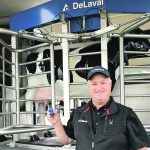
System delivers dairy data every 2.2 seconds
Connecting data to the cloud rather than to on-site computers helps producers increase the speed of data interpretation
DeLaval has launched its Plus Behavior Analysis tool, designed to monitor cow behaviour and herd health. The company’s North American business development manager, Sjenk Van Soelen, said the most significant enhancement is the near real-time nature of DeLaval Plus monitoring abilities. Newly developed ear tags send updates to the barn computer and onto the DeLaval […] Read more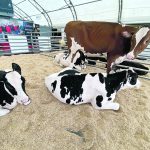
Farmers urged to make tough genomic choices
Emotions often play a role when deciding which heifers to keep, but producers agree that genetics cannot be overlooked
At Rose Vega Farm near Cambridge, Ont., Luke and Kelly Donkers agree that emotion sometimes creeps into dairy breeding decisions. “There are probably more grey-haired cows on our farm than just about anybody else,” Kelly joked as the Donkers took part in a genomics exercise held at EastGen’s display at the Dairy Innovation Centre at […] Read more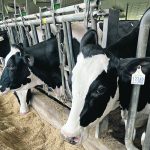
Producers can select for methane-efficient cows
Long-term genetic selection would be less of an impediment to dairy farmers than cuts to fertilizer use or manure capacity
A world-leading approach to creating a methane-specific breeding index has been developed by Lactanet. Not content to wait until “sniffer” technology for measuring bovine methane emissions eventually becomes more affordable, the Canadian dairy data collection and genetics analysis organization developed the index based on milk samples. “Canada will be the first country globally to offer […] Read more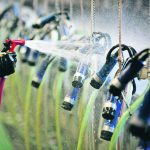
Monitoring dairy cows’ water use has benefits
Water use efficiency should be a priority and minor changes can achieve significant decreases, says AAFC researcher
Small changes can pay dividends in water use on dairy farms, financially and in preserving water quality and supply. Determining where to make those changes takes careful monitoring and investigation. That’s a message in research by Agriculture Canada researcher Andrew VanderZaag. He has studied water use on dairy farms in Ontario, British Columbia and Quebec […] Read more


